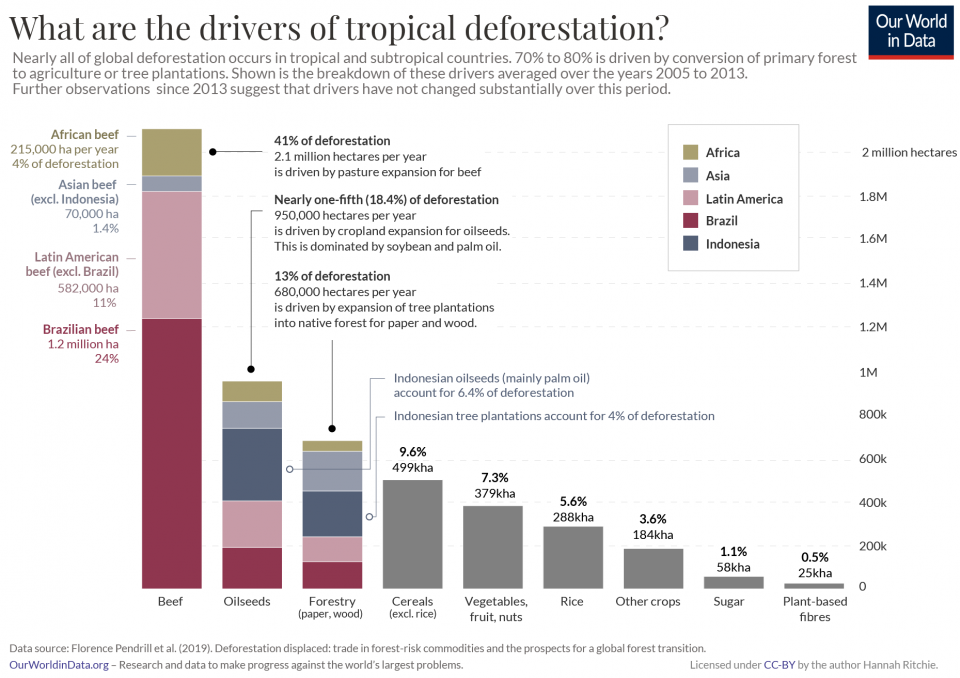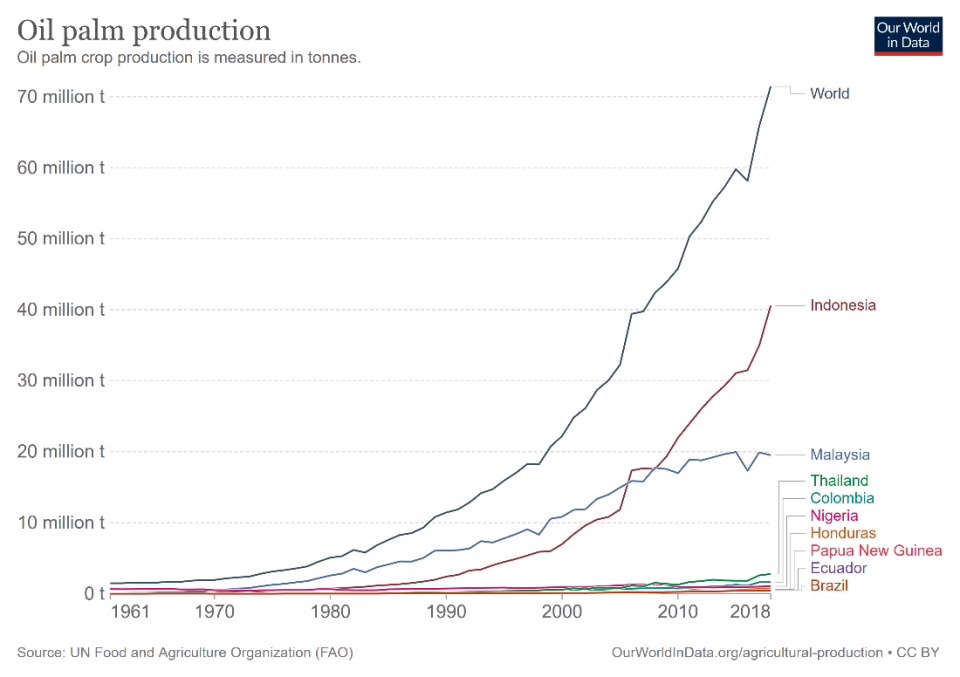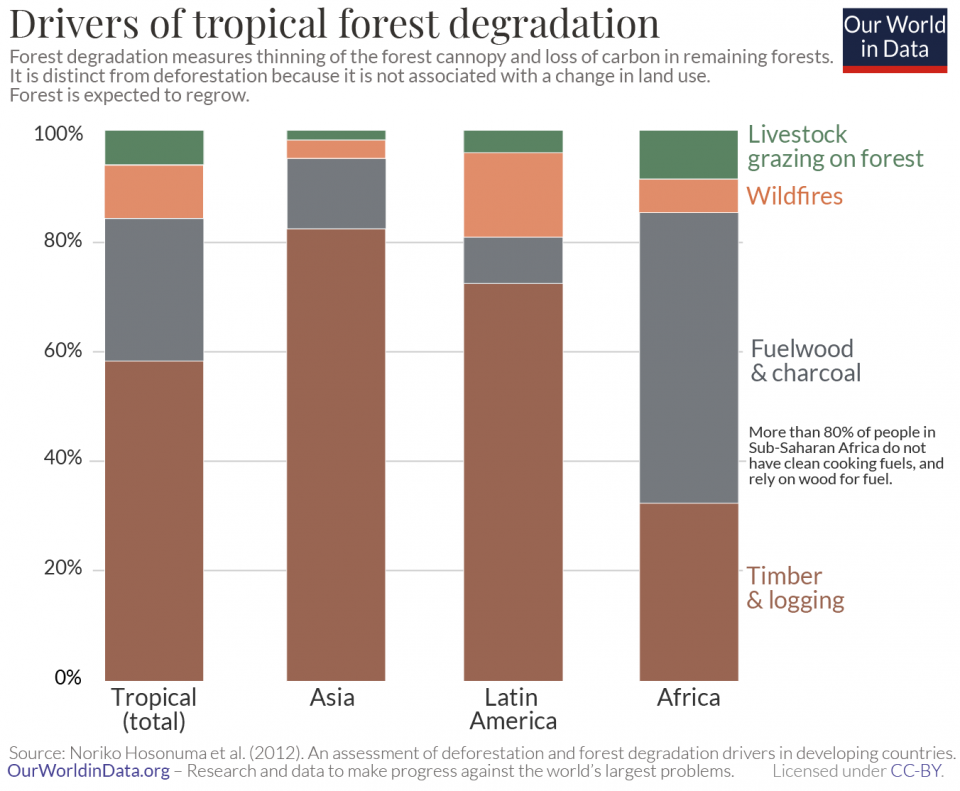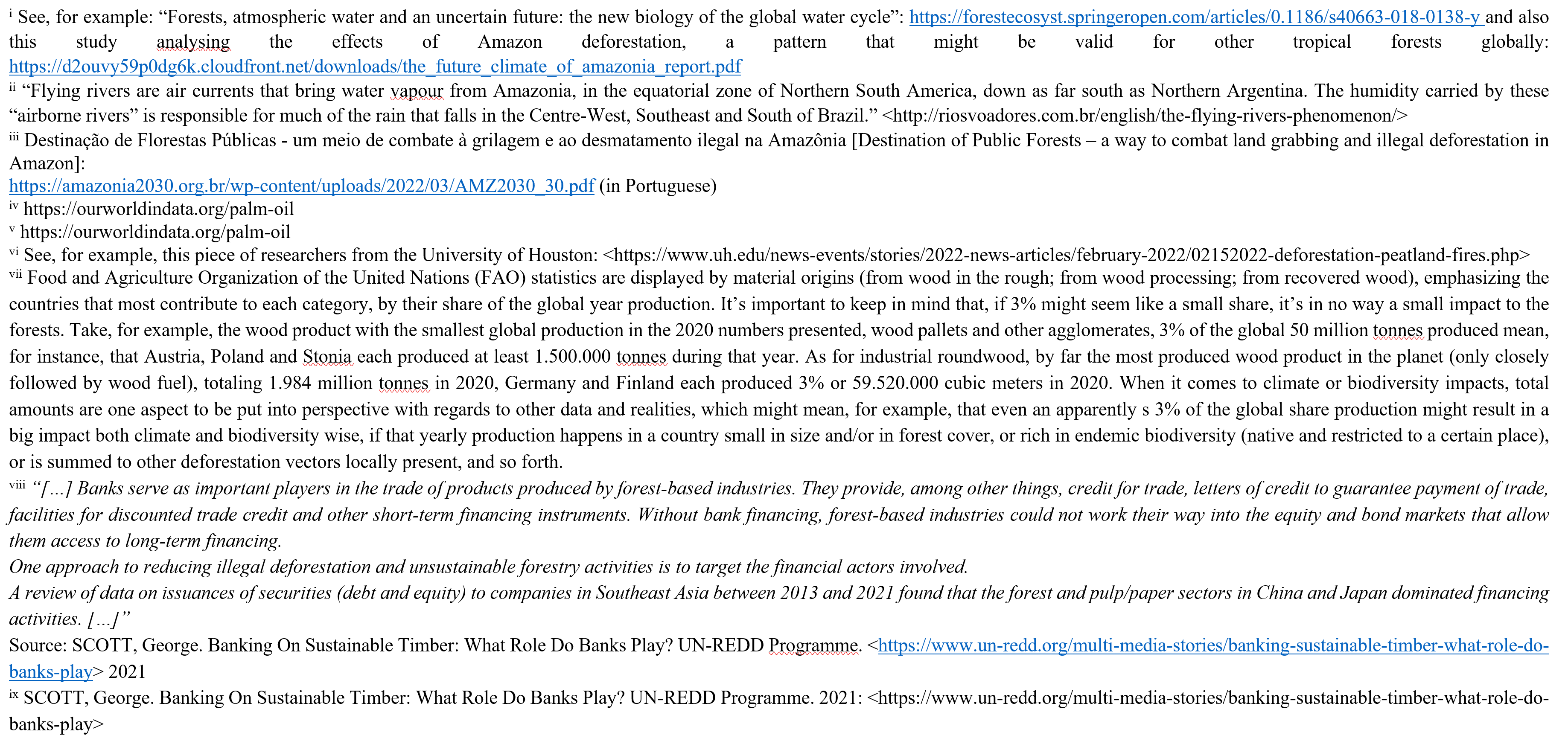

What are the main drivers of deforestation and forest degradation
and which role the financial system has to play?
Luciane Moessa, Ph.D.,
Fernanda Bianco, M.Sc.
and Marcio Gama, M.Sc.
Sustainable Inclusive Solutions (SIS)
Forests are natural sources of climate regulation, either through carbon capture (a result of photosynthesis) or due to other climate balance functions, such as the influence of forests in the hydrological cycle through the rainfall regime [i]. And deforestation itself is a major source of Green House Gases (GHG) emissions, because it releases the stock of carbon that was stored in the soil and on biomass, and contribute to biodiversity loss.
It is essential to understand that climate conditions depend not only of the GHG concentration in the atmosphere, but also on water vapour (which is another subproduct of photosynthesis of forest trees, as much as oxygen) in the atmosphere. In Brazil, for example, it has been proved scientifically that the water vapour of the Amazon Forest even moves for thousands of kilometers, directly affecting the rainfall regime in other regions of the country – a phenomenon that has been named “flying rivers”. [ii]
Also, given the fact that climate change increases significantly water risks, any factor that affects freshwater availability (and hence also human health and food security) should be regarded as a climate change relevant issue.
The commodities behind deforestation and forest degradation
According to data of FAO (Global Remote Sensing Survey) published during COP 26, agricultural expansion drives almost 90% of global deforestation, the vast majority of which taking place in tropical biomes.
Also, according to a study on Drivers of Deforestation published in “Our World in Data”, 60% of tropical deforestation is driven by beef, soybeans and palm oil.

Other commodities that are relevant drivers of deforestation are pulp and paper and rubber. At the Congo River basin, for example, according to Forest and Finance data, most of the forest-risk commodity finance goes to timber and rubber.
In absolute figures, the table below brings the top 10 countries for primary forest loss in 2020:
|
Country |
Hectares of primary forests lost |
|
Brazil |
1,704,090 |
|
Congo |
490,613 |
|
Bolivia |
276,883 |
|
Indonesia |
270,057 |
|
Peru |
190,199 |
|
Colombia |
166,485 |
|
Cameroon |
100,295 |
|
Laos |
82,240 |
|
Malaysia |
72,977 |
|
Mexico |
68,423 |
Source: https://research.wri.org/gfr/forest-pulse
In South America, 75% of deforestation is due to livestock grazing and, together with Africa and Southeast Asia, it is one of the three key areas where deforestation rates are highest globally. As we can see above, livestock (mainly beef) appears as the top key deforestation driver, accounting for about 40% of deforestation alone – and that is without full life-cycle assessment, which would also consider all physical inputs and outputs of agricultural crops (soybeans and corn) used as animal feed. The table below illustrates which are the largest global producers of beef.
|
Country |
Million tons of beef |
|
USA |
12,6 |
|
Brazil |
10,4 |
|
European Union |
7,7 |
|
China |
7,0 |
|
India |
4,0 |
|
Argentina |
3,1 |
|
Mexico |
2,1 |
|
Australia |
2,1 |
|
Global total |
58,2 |
Source: USDA (2021)
In Brazil, deforestation for the expansion pasture areas is closely related with land tenure issues, since cattle ranching is used as a way to illegally grab public lands. Some recent data [iii] show that deforestation in Amazon increased 56,5% in the period 2019-2021, compared to 2016-2018. Public lands (83% of which from the federal domain) concentrated 51% of deforestation in this period.
Another key driver of deforestation is the production of the cereal that is most commonly used as animal feed: soybeans, whose major global producer is Brazil. But other South American countries (Argentina, Paraguay and Bolivia) are also among the top 10 producers (see table below), while Brazil has the highest deforestation rates, and Bolivia is also included among the top 10 countries in terms of deforestation area, despite its relatively small territory.
|
Country |
Tons of soybeans |
|
Brazil |
121,797,712 |
|
USA |
112,549,240 |
|
Argentina |
48,796,661 |
|
China |
19,604,447 |
|
India |
11,226,000 |
|
Paraguay |
11,024,460 |
|
Canada |
6,358,500 |
|
Russia |
4,307,593 |
|
Bolivia |
2,829,356 |
|
Other countries |
14,814,966 |
|
Global total |
353,308,935 |
Source: FAOStats (2020)
Regarding palm oil, “(s)mall amounts of palm oil are grown in many countries, but the global market is dominated by only two: Indonesia and Malaysia. In 2018, the world produced 72 million tonnes of oil palm. Indonesia accounted for 57% of this (41 million tonnes), and Malaysia produced 27% (20 million tonnes). 84% of global palm oil production comes from Indonesia and Malaysia.” [iv]
Other producers, included in the top ten, are Thailand, Nigeria, Brazil, Colombia, Ecuador, Guatemala, Honduras and Papua New Guinea.
It’s interesting to observe that the deforestation linked to palm oil started to grow steadily in the 1980’s. “The story of palm oil is less about it as an isolated commodity, but more about the story of the rising demand for vegetable oils. Palm oil is a very productive crop; as we will see later, it produces 36% of the world’s oil, but uses less than 9% of croplands devoted to oil production. It has therefore been a natural choice to meet this demand.” [v]

Moreover, regarding deforestation, it’s also relevant to point out that wildfires and human-caused fires are responsible for 10 to 15% of GHG emissions globally [vi] - and the frequency of wildfires is increasing exactly because of climate change, in a spiral effect.
As for forest degradation (and sometimes also deforestation, when logging is followed by livestock grazing, for example, as it is common in the Amazon), another key commodity is timber, which is not accounted as a deforestation driver because the “final” use of the land is not timber extraction, but it is the first commodity extracted from deforested areas.

The global trade of timber is a multibillion-dollar industry that figures high in the forest degradation ratios much due to the large variety of uses for wood in the rough and processed wood products, such as in construction, paper, packaging, biomass and sold as furniture or textiles. The latest available Food and Agriculture Organization of the United Nations statistics[vii] (FAO, 2020) presented below help to grasp the size and relevance of that commodity worldwide.
|
Global production and trade in forestry products in 2020 |
||||
|
Forestry Product |
Unit |
Global Production |
Global Exports |
Major Producers |
|
Roundwood |
million m³ |
3 912 |
140 |
|
|
Wood fuel |
million m³ |
1 928 |
6 |
India (16%); China (8%); Brazil (6%); Ethiopia (6%); Dem. Republic of Congo (5%); Nigeria (3%); USA (3%). |
|
Industrial roundwood |
million m³ |
1 984 |
134 |
USA (19%); Russia (10%); China (9%); Brazil (7%); Canada (7%); Indonesia (4%); Sweden (4%); Germany (3%); Finland (3%). |
|
Wood pellets and other agglomerates |
million tonnes |
50 |
31 |
USA (17%); Canada (8%); Germany (8%); Russia (7%); Vietnam (7%); Brazil (6%); Latvia (5%); Sweden (4%); France (3%); Poland (3%); Estonia (3%); Austria (3%). |
|
Sawnwood |
million m³ |
473 |
153 |
China (18%); USA (17%); Russia (9%); Canada (8%); Germany (6%); Sweden (4%). |
|
Wood-based panels |
million m³ |
367 |
88 |
China (44%); USA (9%); Russia (4%); Germany (3%); India (3%); Canada (3%); Brazil (3%); Poland (3%). |
|
Wood pulp |
million tonnes |
186 |
69 |
USA (26%); Brazil (11%); China (9%); Canada (8%); Sweden (6%); Finland (5%); Russia (4%); Indonesia (4%); Japan (4%); India (3%); Chile (3%). |
|
Recovered paper |
million tonnes |
229 |
45 |
China (24%); USA (18%); Japan (8%); Germany (7%); Republic of Korea (4%); United Kingdom (3%); France (3%). |
|
Paper and paperboard |
million tonnes |
401 |
111 |
China (28%); USA (17%); Japan (6%); Germany (5%); India (4%); Republic of Korea (3%); Indonesia (3%); Brazil (3%). |
|
Forest products value |
US$ billion |
244 |
|
|
Source: FAOSTAT-Forestry database (2020)
Timber extraction, which is relevant in all the main three tropical forests basins (South America, Africa and Southeast Asia), is linked to very high rates of illegality, as described in the mentioned FAO report:
“Ensuring the legality of timber production and trade, and strengthening forest governance, are crucial for tackling deforestation. The International Criminal Police Organization (INTERPOL) estimates that the value of illegal timber trade lies in the range of USD 51–152 billion per year.59 The Convention on International Trade in Endangered Species of Wild Fauna and Flora (CITES) promotes the sustainable trade of approximately 300 timber species that are at risk of overexploitation through sustainability and legality standards. Demand-side commitments to legality, such as those made by both producer and consumer countries within the framework of the FAO-EU Forest Law Enforcement, Governance and Trade (FLEGT) Action Plan and associated bilateral Voluntary Partnership Agreements (VPA) processes, have shown that trade is an effective tool for incentivizing governance reforms to promote legal and sustainable forest management and economic development. Furthermore, demand-side legislation, including the European Union Timber Regulation (EUTR) and import regulation, the United States’ Lacey Act Amendment, Japan’s Clean Wood Act and the Republic of South Korea’s Act on Sustainable Use of Timber, among others, shape a global trade environment where the legality of timber imports must be demonstrated.
Voluntary certification is also a valuable tool and already covers more than one third of industrial roundwood production.60 Progress in addressing illegality requires continued commitments to transparency and to eliminating corruption, as well as adequate and predictable funding for enforcement. Effective law enforcement depends critically upon understanding and responding to the needs of indigenous peoples and local communities.61”
[Footnotes refer to Mitsugi, H. & Ikram Yaakob, M.S. 2018. Co-chairs summary report. Paper presented at CPF International Conference Working across sectors to halt deforestation and increase forest area. From aspiration to action. 14 March 2018, Rome, Collaborative Partnership on Forests]
The role of the financial sector and recent global initiatives
Banks and institutional investors of course play a major role, since, without financing [viii], for example, large-scale forest exploitation operations wouldn’t be commercially feasible, because they require capital to buy equipment and machinery and to pay the costs of harvesting, processing and transporting to the markets. Analysis published by the UN-REDD Programme points out that, given the extent of illegal logging and illegal conversion of forest lands, exposure to companies that operate within wood products supply-chains is a risk for banks and investors, as the underlying companies face potential operational risks from disruption to supply and price changes. These companies represent both credit and reputational risks, meanwhile banks themselves face reputational risks in a global market where customers value the integrity of their banks, not to mention legal risks resulting from banking regulations and anti-money laundering laws [ix].
In the European Union, alongside the EU Legal Timber Regulation, the “Amsterdam Declaration” Towards Eliminating Deforestation from Agricultural Commodity Chains with European Countries, signed in December 2015 by major economies (UK, France and Germany) and also by some of the most advanced ones (Denmark, Netherlands and Norway) was the pioneer global initiative from governments. Nonetheless, the upcoming UK legislation on forest-risk commodities tackling illegal deforestation in supply-chains and the US-China Joint Statement on Enhancing Climate Action in the 2020s are clear signs of rising market risks for producers of these commodities, representing credit risk for banks and financial risks for investors who have them on their portfolios.
However, it is important to highlight, as pointed out by the research report of Our World in Data on Deforestation and Forest Loss, that only about 14% of deforestation is driven by consumption in rich countries (p. 11), once about 71% of deforestation-linked timber is for domestic production (p. 19), which makes clear that, with regards to credit, the involvement of banks from producing regions is relevant to any initiative that aims to have a positive relevant impact on reducing deforestation and forest degradation.
But, if investments are considered, there is a lot of funding channeled from developed countries (investors) to companies that operate in the countries where deforestation rates are high. And the banking sector has a leverage here both through investment banking and through asset management activities.
That is why recent global commitments of banks and investors are so relevant, but also need to be translated into action at local level and definitely need to focus the whole value-chain of the companies to which they lend or channel investments.
Last but not least, it is interesting to observe the latest developments of the Network for Greening the Financial System (NGFS), which is expanding its focus from climate risks to biodiversity risks, making it very likely that deforestation risks will soon come to the top of banking regulators agenda.

Posted on 2022-05-24 18:34








Comments